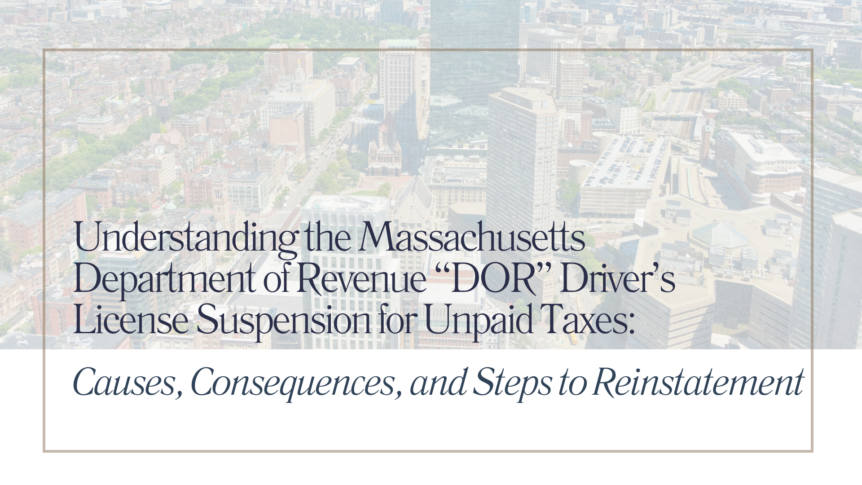
Understanding the Massachusetts Department of Revenue “DOR” Driver’s License Suspension for Unpaid Taxes: Causes, Consequences, and Steps to Reinstatement
A DOR driver’s license suspension due to unpaid taxes can be a significant disruption in an
individual’s life, affecting their ability to drive to work or manage daily responsibilities. This
article delves into the causes of DOR driver’s license suspensions, the consequences for
those affected, and the steps required to reinstate a suspended license.
Causes of DOR License Suspensions
The DOR can suspend a taxpayer’s driver’s license when there is a delinquent state tax
liability. A taxpayer will receive multiple warning letters threatening the suspension of the
driver’s license before the DOR takes action to suspend. Should the taxpayer ignore the
DOR letters demanding payment for the outstanding taxes, the DOR will send the
suspension notice to the Massachusetts Registry of Motor Vehicles. The RMV will suspend
the license and prevent the taxpayer from renewing the license until the DOR formally
directs the RMV to remove the suspension. In order to lift the DOR suspension of the
driver’s license, the taxpayer will have to negotiate an agreement with the DOR for the
payment of outstanding taxes due. Only then will the DOR agree to lift the suspension.
Consequences of License Suspension
The suspension of a driver’s license can have far-reaching implications, impacting various
aspects of daily life:
- Employment: Many jobs require a valid driver’s license, either for commuting or for
job duties. Suspension can jeopardize employment or make it challenging to secure
new opportunities. - Independence: Losing the ability to drive affects personal freedom and the
capacity to perform routine tasks such as grocery shopping, attending medical
appointments, or transporting children. - Legal Repercussions: Driving with a suspended license is a criminal offense that
can result in fines, extended suspension periods, or even imprisonment. - Financial Strain: The cost of reinstating a license, including paying fines, legal fees,
and possibly higher insurance premiums, can be a significant financial burden.
Steps to Reinstate a Suspended License
Reinstating a suspended license involves several steps. Typically, the process includes: - Determine the Cause: Request a tax account statement stating the total tax
liability due and the relevant taxable years at issue. - Satisfy Requirements: Negotiate a payment agreement with the DOR and be
prepared to make a good faith payment towards the outstanding tax liability. - Pay Reinstatement Fees: There is usually a fee associated with reinstating a
suspended license. The taxpayer may also be required to pass a driver’s test if the
license has been suspended for more than two years.
Navigating the complexities of a DOR license suspension can be challenging, but
understanding the causes, consequences, and reinstatement process is crucial for
regaining driving privileges. It’s essential to address the root cause of the suspension
promptly and comply with all requirements to avoid further complications. For those
struggling with the legal and administrative aspects, seeking assistance from a
Massachusetts DOR Tax Attorney can provide valuable guidance and support.
